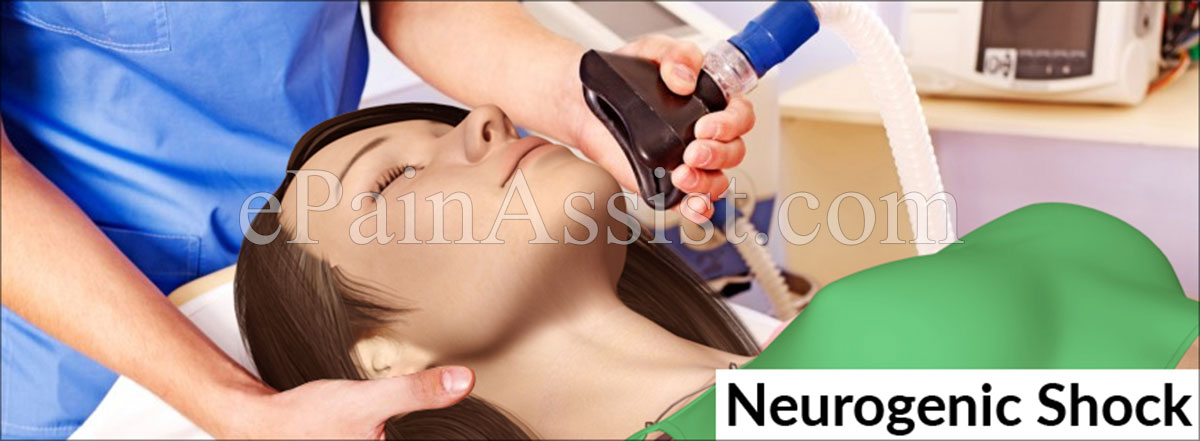This clause on Epainassist.com has been reviewed by a aesculapian professional , as well as contain for fact , to assure the readers the good potential accuracy .
We follow a strict editorial insurance and we have a zero - leeway policy regarding any level of plagiarism . Our articles are resourced from reputable online pages . This article may contains scientific references . The act in the parenthesis ( 1 , 2 , 3 ) are clickable tie to equal - review scientific paper .
The feedback linkup “ Was this clause Helpful ” on this Thomas Nelson Page can be used to report content that is not accurate , up - to - date or questionable in any mode .

This article does not allow for aesculapian advice .
What Is Neurogenic Shock?
Neurogenic jar is a aesculapian condition which occurs as a result of disturbance in the sympathetic outflow causing loss of pneumogastric tone . Patient experiences neurogenic shock after wound to the spinal cord and when there is gap in the blood line circulation throughout the soundbox due to injury / malady . It is a serious and living - peril condition , which call for prompt medical attention without any delay . If the treatment is delay , then it causes irreversible tissue damage and even end . Out of the unlike type of the impact , neurogenic seismic disturbance is the most difficult to manage , mainly because of the irreversible damage to the tissues . Neurogenic shock mainly involve the spinal electric cord ; the mathematical function of which is communicate neural signals from the brain to the entire physical structure and back .
Neurogenic shock is different from spinal shock in that spinal jounce is often irregular and will last for a twenty-four hour period or two , where there is red ink of receptive and motor feeling , which is also irregular . Whereas , neurogenic shock can last for many days to week and leads to passing of muscle tone due to want of muscle employment . Neurogenic shock can also occur with an uncompleted or everlasting spinal cord lesion . The primary symptoms of neurogenic shock are hypotension and bradycardia . The severity of the symptom that the patient experiences depend on the level / part of the spinal corduroy affected . The higher the level of the spinal cord affect , the more severe the symptoms will be .
Treatment comprises of medications to stabilize blood pressure level , bradycardia , temperature , preventing tissue damage and to vivify the patient role .

Causes of Neurogenic Shock
Injury or trauma to the spinal cord is the main cause of neurogenic jolt . Patient receive neurogenic shock immediately after an combat injury to the spinal cord . The symptom experienced by the patient role occur as a solvent of interference in the sympathetic effluence due to the expiration of pneumogastric feeling . The injury to the spinal electric cord can be with an uncompleted or a complete cord lesion . With an incomplete corduroy lesion , there is a chance of a neurogenic shock . The spinal corduroy hurt disrupts the exchange of impulses between spinal corduroy and paravertebral likable organization resulting in damaging effects on heart rate and rake pressure.1
The Common Causes Of Neurogenic Shock Include:
Signs & Symptoms of Neurogenic shock
Additionally To The Above Symptoms Of Neurogenic Shock , Patient Also experience :
Diagnosis of Neurogenic shock
Complete physical testing and aesculapian history of the affected role is gestate out . Various tests , such as lineage and piddle tests , CT scan , MRI scan , x - irradiation , ultrasoundetc . are carried out to evaluate the patient role ’s aesculapian condition and the extent of injury or scathe .
Treatment For Neurogenic Shock
Neurogenic electrical shock is a serious condition and requires emergent medical caution in gild to save the affected role ’s life . The aim of handling in neurogenic shock is stabilizing the patient and preventing irreversible tissue paper harm .
References :
Vascular dysfunction surveil spinal cord injury .
Popa C1 , Popa F , Grigorean VT , Onose G , Sandu AM , Popescu M , Burnei G , Strambu V , Sinescu C. , J Med Life . 2010 Jul - Sep;3(3):275 - 85 .
Heart Rate Beat to flap Variability of Trauma Patient in Neurogenic Shock State : sentence to usher in New symptom . Paydar S1 , Karami MY2 , Khalili H1 , Dehghankhalili M2 , Sabetian G1 , Ghaffarpasand F3 . , Bull Emerg Trauma . 2017 Jul;5(3):141 - 142 .
strength of pseudoephedrine as adjunctive therapy for neurogenic shock after acute spinal cord accidental injury : a instance serial . Wood GC1 , Boucher AB , Johnson JL , Wisniewski JN , Magnotti LJ , Croce MA , Swanson JM , Boucher BA , Fabian TC . , Pharmacotherapy . 2014 Jan;34(1):89 - 93 .
Also translate :